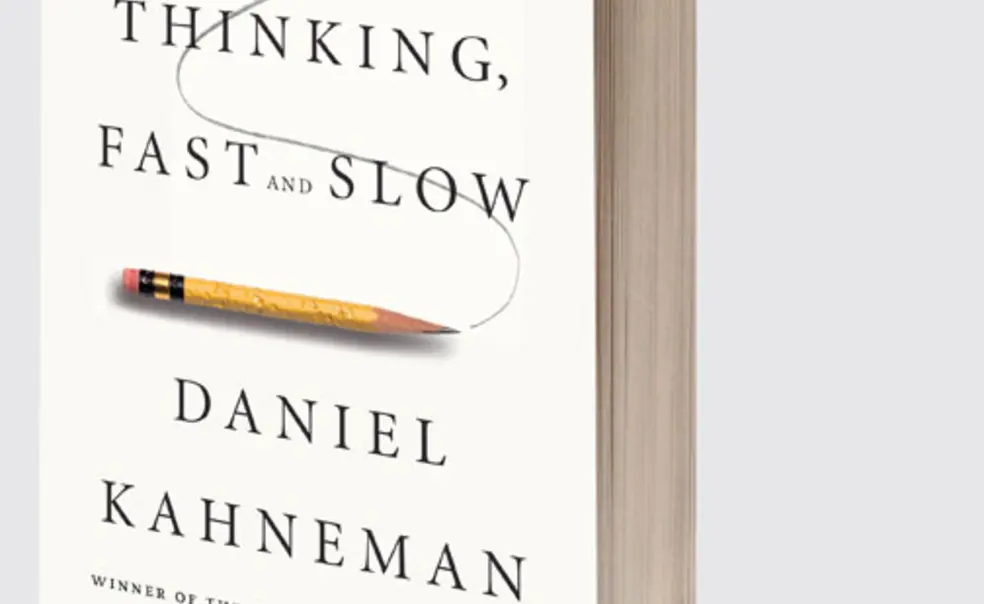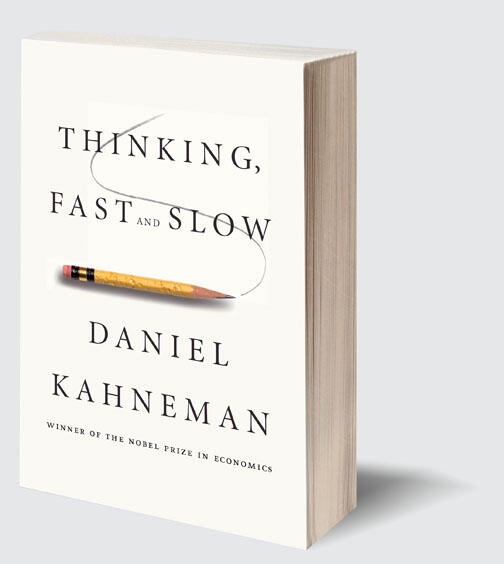Excerpts from Thinking, Fast and Slow
“The attentive System 2 is who we think we are. System 2 articulates judgments and makes choices, but it often endorses or rationalizes ideas and feelings that were generated by System 1. You may not know that you are optimistic about a project because something about its leader reminds you of your beloved sister, or that you dislike a person who looks vaguely like your dentist. If asked for an explanation, however, you will search your memory for presentable reasons and will certainly find some. Moreover, you will believe the story you make up. But System 2 is not merely an apologist for System 1; it also prevents many foolish thoughts and inappropriate impulses from overt expression. The investment of attention improves performance in numerous activities — think of the risks of driving through a narrow space while your mind is wandering — and is essential to some tasks, including comparison, choice, and ordered reasoning.”
“In today’s world, terrorists are the most significant practitioners of the art of inducing availability cascades [‘a self-sustaining chain of events, which may start from media reports of a relatively minor event and lead up to public panic and large-scale government action.’]. With a few horrible exceptions such as 9/11, the number of casualties from terror attacks is very small relative to other causes of death. Even in countries that have been targets of intensive terror campaigns, such as Israel, the weekly number of casualties almost never came close to the number of traffic deaths. The difference is in the availability of the two risks, the ease and the frequency with which they come to mind. Gruesome images, endlessly repeated in the media, cause everyone to be on edge. As I know from experience, it is difficult to reason oneself into a state of complete calm. Terrorism speaks directly to System 1.”
“Hindsight bias has pernicious effects on the evaluations of decision makers. It leads observers to assess the quality of a decision not by whether the process was sound but by whether its outcome was good or bad. Consider a low-risk surgical intervention in which an unpredictable accident occurred that caused the patient’s death. The jury will be prone to believe, after the fact, that the operation was actually risky and that the doctor who ordered it should have known better. This outcome bias makes it almost impossible to evaluate a decision properly — in terms of the beliefs that were reasonable when the decision was made.”
“It is not only at the opera that we think of life as a story and wish it to end well. When we hear about the death of a woman who had been estranged from her daughter for many years, we want to know whether they were reconciled as death approached. We do not care only about the daughter’s feelings — it is the narrative of the mother’s life that we wish to improve. Caring for people often takes the form of concern for the quality of their stories, not for their feelings. Indeed, we can be deeply moved even by events that change the stories of people who are already dead. We feel pity for a man who died believing in his wife’s love for him, when we hear that she had a lover for many years and stayed with her husband only for his money. We pity the husband although he had a happy life. We feel the humiliation of a scientist who made an important discovery that was proved false after she died, although she did not experience the humiliation. Most important, of course, we all care intensely for the narrative of our own life and very much want it to be a good story, with a decent hero.”
Excerpted from Thinking, Fast and Slow by Daniel Kahneman, published by Farrar, Straus and Giroux LLC. Copyright © 2011 by Daniel Kahneman. All rights reserved.













No responses yet